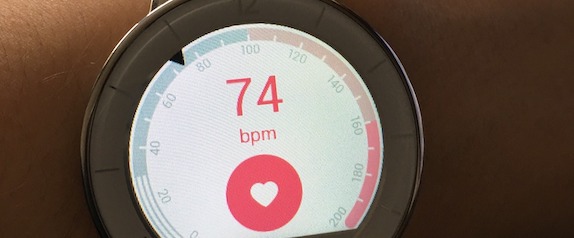COPING – CERG

COPING: Can genetic testing help us predict cardiovascular disease more precisely?
What do our genes say about our cardiorespiratory fitness and resting heart rate? Can the fitness and resting heart rate genes also tell us who has a high risk of lifestyle diseases? And can a high resting heart rate in itself cause cardiovascular disease?
PhD project: COPING (improving CardiOvascular disease risk Prediction algorithms by INcorporating Genetic markers)
Candidate: Marie Klevjer

Background
Low maximal oxygen uptake and high resting heart rate are strong risk factors for cardiovascular disease. Several studies have shown that our genes are of great importance for both oxygen uptake and resting heart rate. We also know that mice that have been bred for generations to be born with low fitness have a very high risk of developing cardiovascular disease. Nevertheless, we cannot be sure that it is low fitness and a high resting heart rate that acatually cause the disease.
Through the Fitness Project in both HUNT3 and HUNT4, we have access to the genes of thousands of people who have tested their maximum oxygen uptake on a treadmill, and to even more who have measured their resting heart rate. In her doctoral project, Marie Klevjer uncovers previously unknown fitness and resting heart rate genes by analyzing the entire genetic material of these participants - which involves many millions of different genetic variants.
In her second article, Marie investigates whether a high resting heart rate can actually cause cardiovascular disease. To find out, she uses a method called Mendelian randomization, which is based on the assumption that genetic variants are inherited randomly in the population, and that it is therefore random who has which gene variants. When a genetic variant that affects a risk factor – in this case resting heart rate – is found, it is possible to examine how big an effect this risk factor actually has on the disease – i.e. cardiovascular disease.
Today, only traditional risk factors such as blood pressure, cholesterol, blood sugar and BMI are included in the models which determine who needs extra follow-up to avoid cardiovascular disease in the future. In the last article in the project, Marie looks at whether these models can become more precise if you also include fitness genes, resting heart rate genes and genetic variants that have previously been shown to be directly linked to cardiovascular disease.
We have uncovered two new genetic variants that appear to be important for the VO2 max level in women. Based on our own fitness measurements of over 4,500 Norwegians, we found 38 genetic variants that were linked to high or low maximum oxygen uptake. When we looked at the same variants in blood samples from 60,000 fitness-tested Britons, we could confirm that two of them were decisive for the fitness level - at least in women.
The analysis is a so-called genome-wide association study, where we have examined the entire genetic material of participants in the HUNT3 Fitness study. Thus, we have been able to analyze 14 million genetic variants in these participants to see if they are linked to their fitness level. In the population as a whole, only two of these variants were significantly associated with fitness. However, when we analyzed women and men separately, we found 35 potential fitness genes in women and two in men.
Two of the gene variants that were important for VO2 max in Norwegian women were also significantly related to fitness in the British population. One of the genetic variant is located in a gene that is important for heart function and development of cardiovascular disease. Poor fitness is closely linked to an increased risk of lifestyle diseases, and part of the explanation can probably be found in our genes.
Most studies that have looked for fitness genes in the past have either not measured fitness with a maximum test on a treadmill with direct O2 measurements, or had few participants. Thus, this is the first large study that can use a sufficiently strict level of statistical certainty to uncover genes that are most likely directly linked to fitness. In addition, the study has revealed a number of candidate genes, which may have an impact on fitness but must be investigated further in other studies.
The lower the resting heart rate one is genetically predisposed to have, the higher is the risk of getting atrial fibrillation. Low genetic resting heart rate is inherited randomly and thus not influenced by lifestyle and environmental factors that can change the resting heart rate. Thus, we can say with considerable certainty that it is a low resting heart rate in itself that increases the risk of future atrial fibrillation.
Previous studies have confirmed 46 genetic variants that are linked to a low resting heart rate, and these were the starting point for our analyses. In the study, we have examined genes and other health data in almost 70,000 women and men who participated in the Nord-Trøndelag Health Study between 1995 and 2008. We have also carried out the same investigations with data from the UK Biobank, where over 430,000 Britons contributed between 2006 and 2010.
By 2016, around 7,000 people from Trondheim had been confirmed to have atrial fibrillation, while more than 20,000 Britons had atrial fibrillation by 2021. Those who were genetically predisposed to the lowest resting heart rate had the highest risk. For each beat higher resting heart rate, the risk decreased by 4–5%. Very few people were genetically predisposed to a higher resting heart rate than 90, so we cannot say whether the risk of atrial fibrillation continues to decrease even with resting pulse values above 90.
Although a high resting heart rate in itself seems to protect against atrial fibrillation, it is not those with the highest resting heart rate in the population who have the lowest risk of getting atrial fibrillation. Both resting heart rate and risk of atrial fibrillation are affected by how we live, for example via blood pressure, BMI, smoking habits and level of physical activity. If one studies the link between resting heart rate and atrial fibrillation without taking these factors into account, it is those who have a resting heart rate between 60 and 80 - measured while sitting during the day - who have the lowest probability of getting atrial fibrillation.
Supervisors
Researchers who have contributed to articles from the PhD project
-
Ben Michael Brumpton Associate Professor in Genetic Epidemiology
+47-73597564 +4746229495 ben.brumpton@ntnu.no Department of Public Health and Nursing -
Anja Bye Professor and head of research group in Cardiogenomics
+4793232057 anja.bye@ntnu.no Department of Circulation and Medical Imaging -
Ailin Flakmo Hansen Postdoktor, NTNU
-
Marie Klevjer
marie.klevjer@ntnu.no -
Erik Madssen Associate Professor
erik.madssen@ntnu.no Department of Circulation and Medical Imaging -
Ada Nilsen Nordeidet Postdoctoral Fellow
ada.n.nordeidet@ntnu.no Department of Circulation and Medical Imaging -
Pål Richard Romundstad Professor
+47-73597523 +4799464909 pal.romundstad@ntnu.no Department of Public Health and Nursing -
Ulrik Wisløff Professor and Head of CERG and K.G. Jebsen Centre for Exercise in Medicine
+4772828113 ulrik.wisloff@ntnu.no Department of Circulation and Medical Imaging
Send us an e-mail:
cerg-post@mh.ntnu.no
Send us regular mail:
NTNU, Fakultet for medisin og helsevitenskap
Institutt for sirkulasjon og bildediagnostikk
Postboks 8905
7491 Trondheim
Visit us:
St. Olavs Hospital
Prinsesse Kristinas gt. 3
Akutten og Hjerte-lunge-senteret, 3. etg.
7006 Trondheim






